ESPN embraces IP and HDR in major Wimbledon broadcast facility upgrade
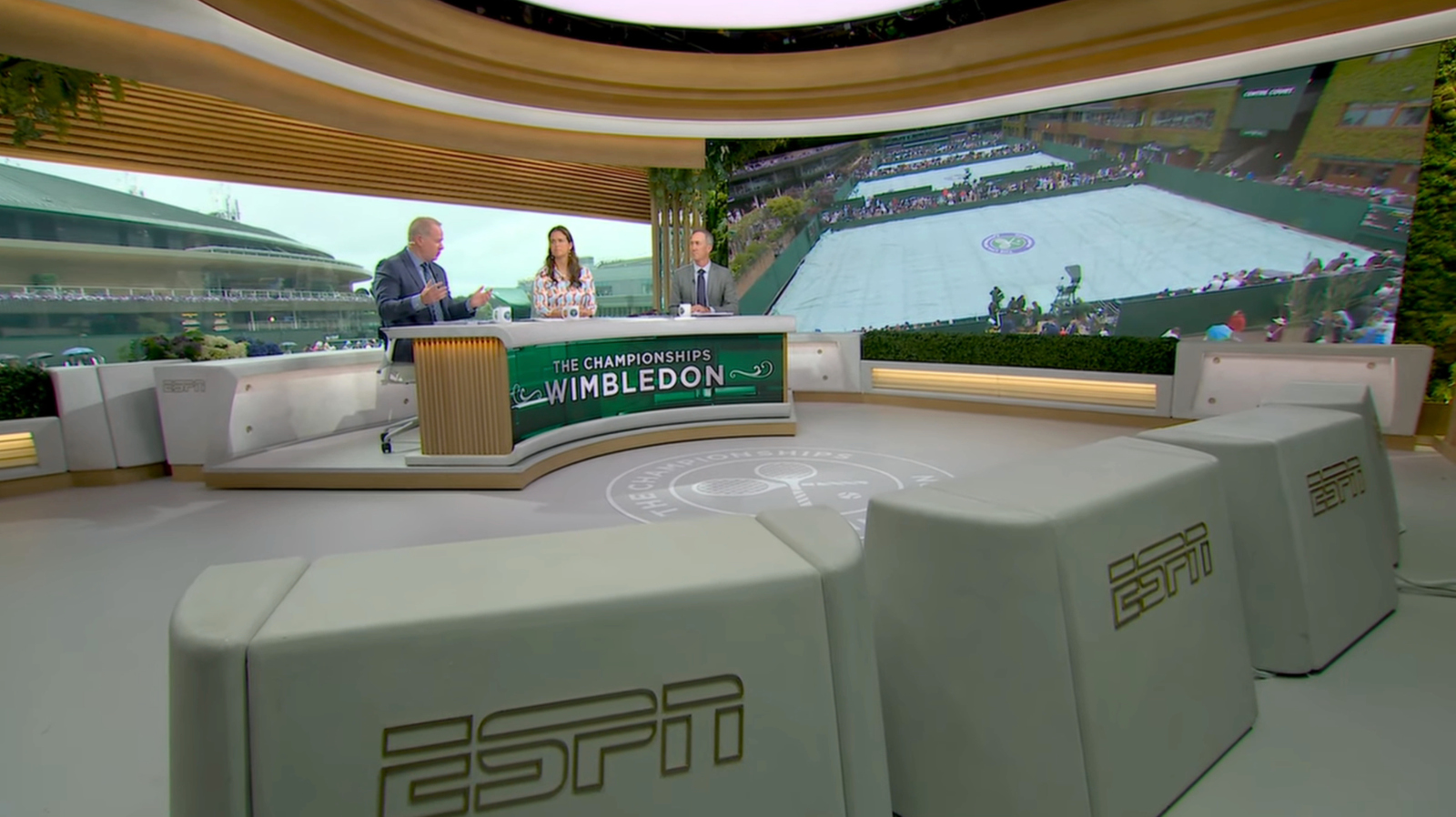
Subscribe to NCS for the latest news, project case studies and product announcements in broadcast technology, creative design and engineering delivered to your inbox.
ESPN has completed a major overhaul of its broadcast facility at the All England Lawn Tennis Club (AELTC), enhancing its ability to cover the Wimbledon tennis tournament each summer.
The extensive renovation, which took three years to plan and execute, encompasses new production spaces, upgraded technical infrastructure and reimagined studios, all designed to enhance the viewing experience for tennis fans worldwide.
“Over the years, our technical space just kind of organically grew – putting up walls and doors as we needed them. It just reached a point where it made sense to start from scratch with a clean slate and build everything the way it needed to be for our future here at AELTC,” said Larry Wilson, senior manager operations, ESPN.
Built from the ground up for tennis coverage
The renovation includes approximately 11,000 square feet across two levels of the broadcast center at the All England Lawn Tennis Club. The facility was stripped down to bare walls and completely rebuilt to meet ESPN’s needs as a broadcast rights holder.
At the heart of the technical operation is a new IP-based SMPTE 2110 backbone, supporting 1080p 50 HDR production. This infrastructure provides the flexibility and capacity to manage the high volume of video feeds generated during the tournament.
“With moving into the new broadcast building, having a new vendor, having a new video format, the new studio, and a new production workflow… you drop those five things all at once. It’s been quite a project and a significant challenge to overcome, which we’ve all achieved, which feels great,” said Sam Olsen, senior technical specialist, ESPN. “It’s all based on an IP backbone working in the HDR world as a rights holder, living in the WBS (Wimbledon Broadcast Services) ecosystem from a video format perspective.”
The new facility and upgraded production are among many new elements for the 2024 event, including new production partner EMG Gravity Media, which worked closely with ESPN on the facility build out.
The space now boasts two fully equipped production control rooms with associated audio control rooms.
“They’re a really good hybrid,” said Marti Hanzlik, coordinating director, ESPN. “We have a combination of remote directors and studio directors, and they had to be built in mind for a lot of studio programming that either starts the day, ends the day or bridges between matches, and then you have to be able to fulfill all your remote needs as well, or event needs. They did a really, really nice job making sure that all the facilities were built out to take care of both of those requests.”
Other key areas include a communications room, a shared replay and ingest area, a master control room, a shading room a robotics room and a graphics area.
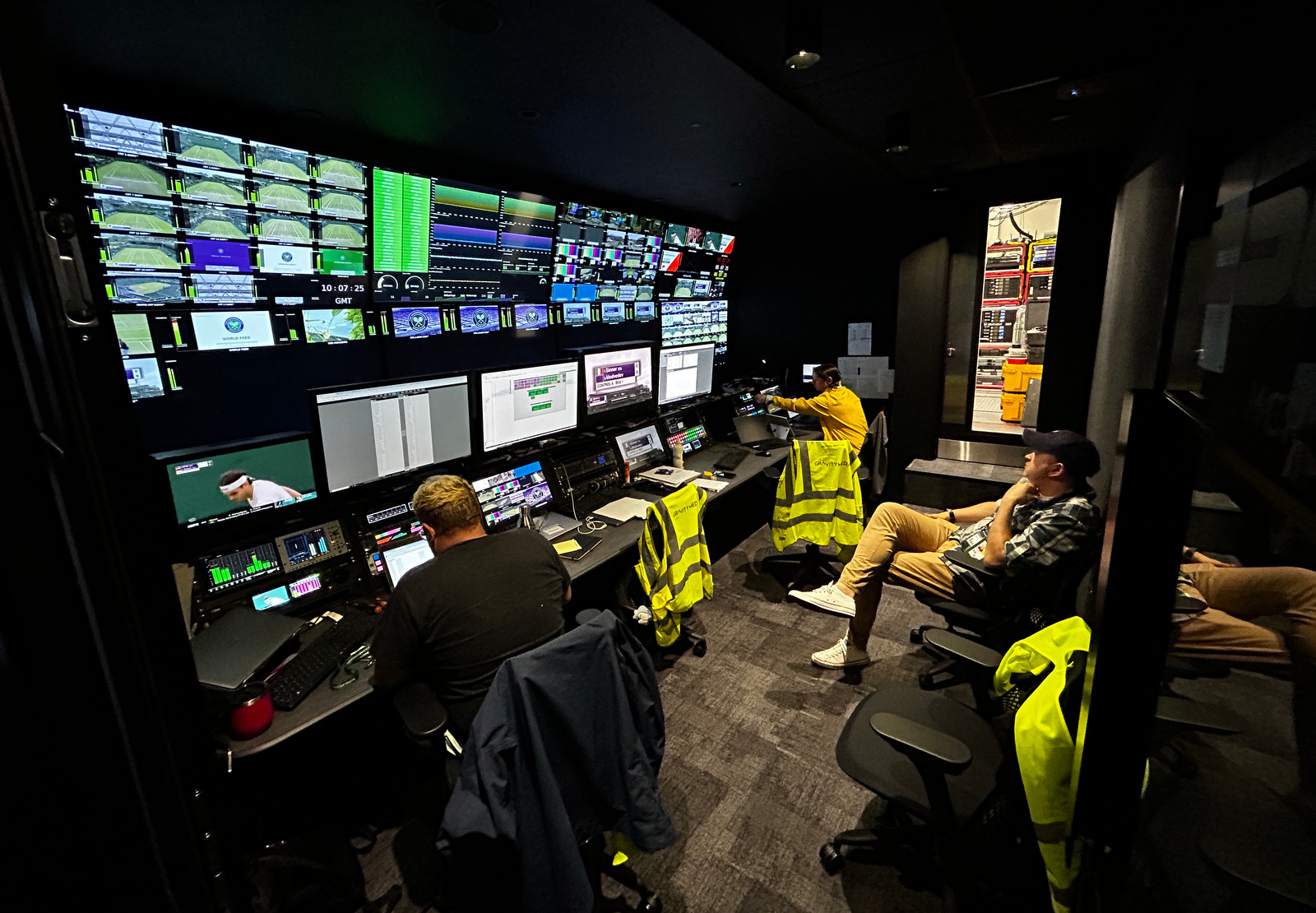
Master Control Room for ESPN at Wimbledon
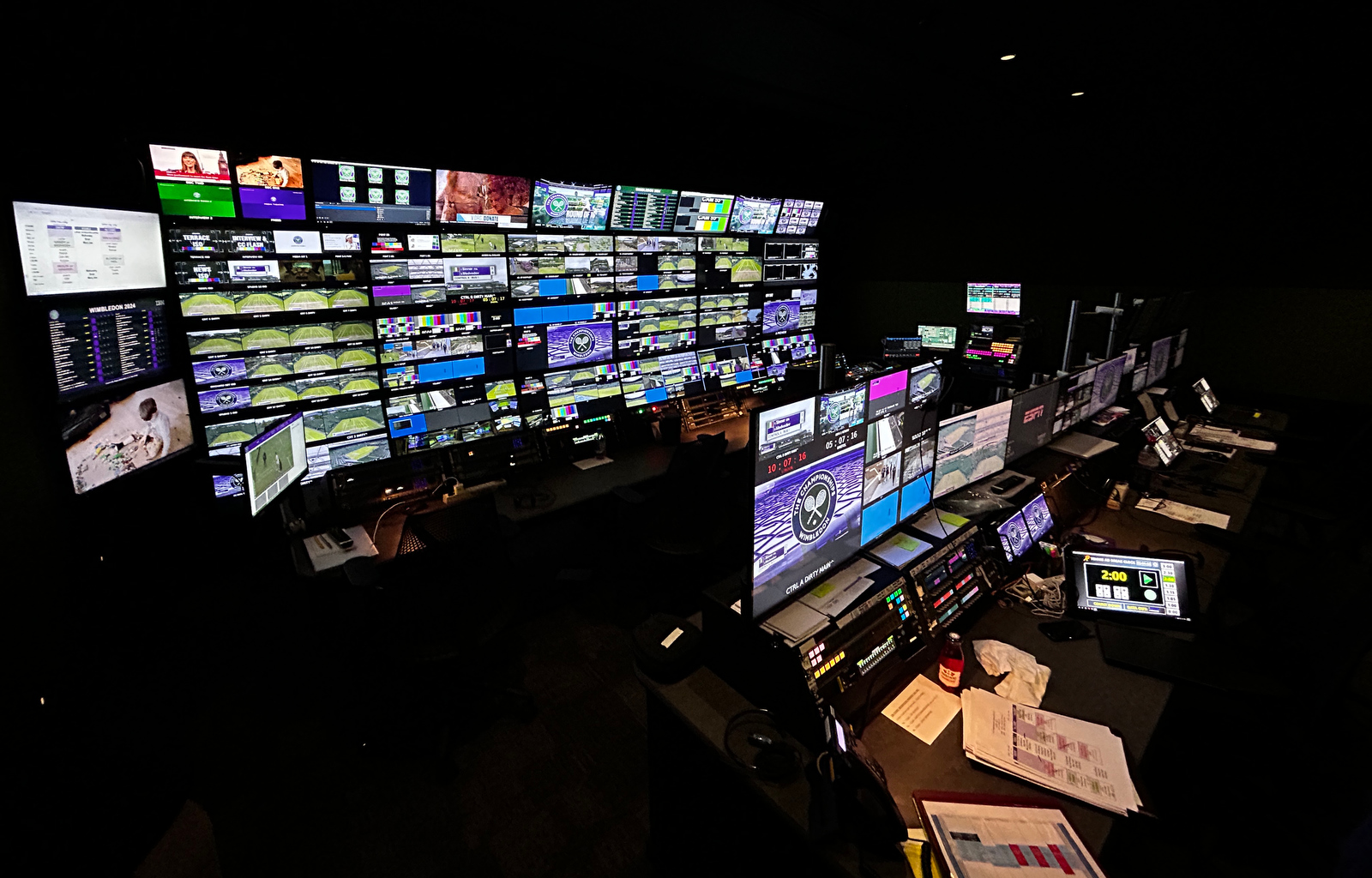
Control A, the primary production control room for ESPN at Wimbledon.
Key technical components include:
- Two Grass Valley K-Frame XP production switchers
- Calrec Artemis audio consoles in the main audio control rooms
- Calrec Brio console for news operations
- EVS XT-VIA servers for replay and ingest
- Sony cameras for studio and field production
- Panasonic UE150 robotic cameras
- RTS ADAM intercom system with Riedel Bolero wireless integration
With the updates, ESPN is also utilizing what they are calling a REMCO (remote-controlled production) model, where the equipment is local, but machine control and staff are remote. They note this is the natural evolution of the REMI model, moving more of the production to the cloud.
“This year we have two of our graphics devices being operated from Bristol, although the frames are here in London, and the same for Viz Libero. Our edit is split, with a local systems as well as a cloud-based system that we’re working through with CMSI,” said Wilson.
Studios that capture Wimbledon
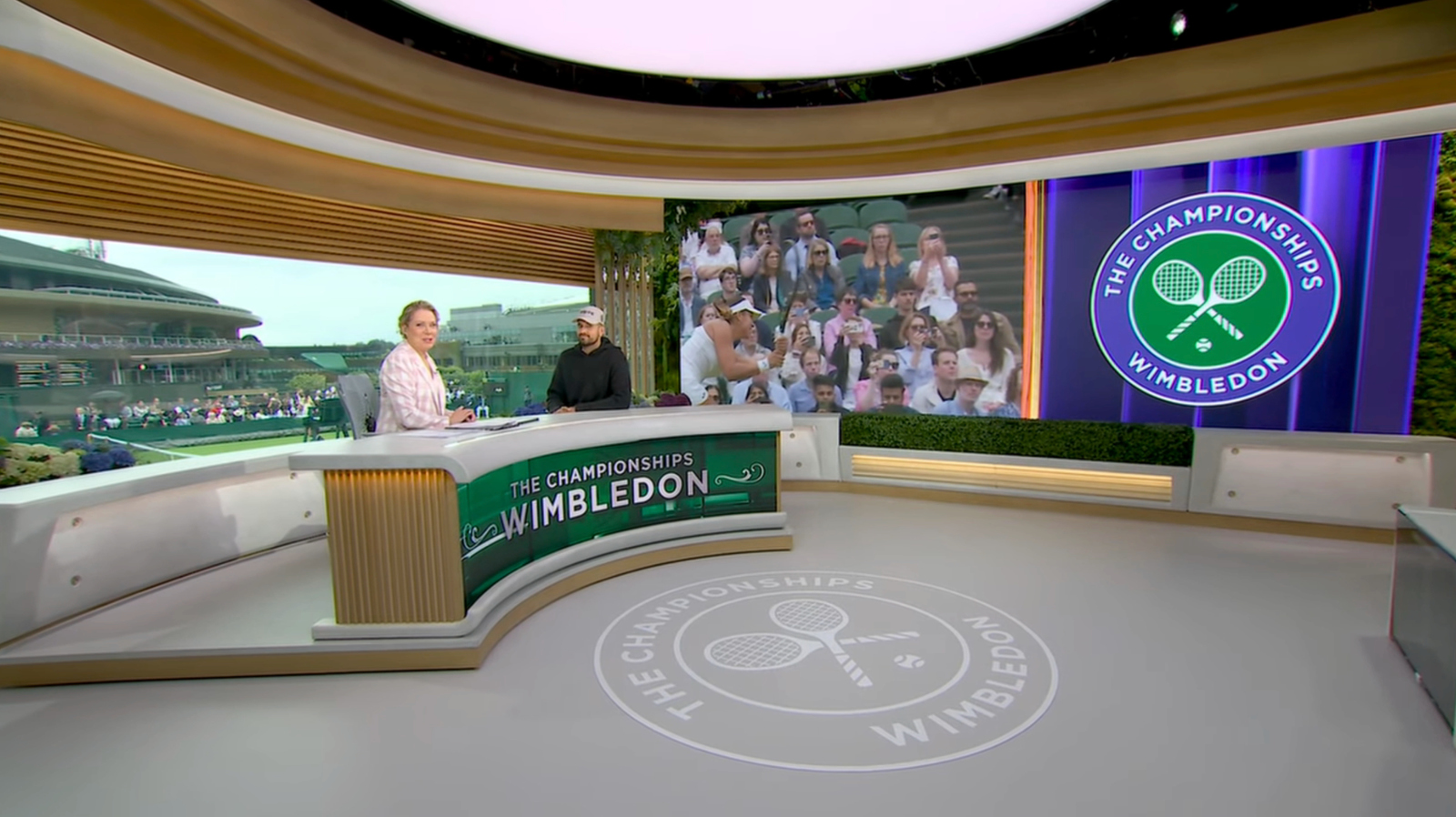
The expanded Studio 3, a little under 1,000 square feet, is the centerpiece of ESPN’s Wimbledon presence. The studio features a 34-by-6-foot window providing an unobstructed view of Court 18, immersing viewers in the Wimbledon atmosphere.
“They replaced the glass as our main backdrop of the set overseeing court 18. That was a huge undertaking to bring in one seamless piece of glass to be our full backdrop behind the desk,” said Hanzlik.
The set design, developed in collaboration with Tim Bird at Shedworks and fabricated by Scott Fleary, incorporates elements that reflect the updated aesthetics of the AELTC, including light woods and green “moss” walls that echo the club’s iconic look.
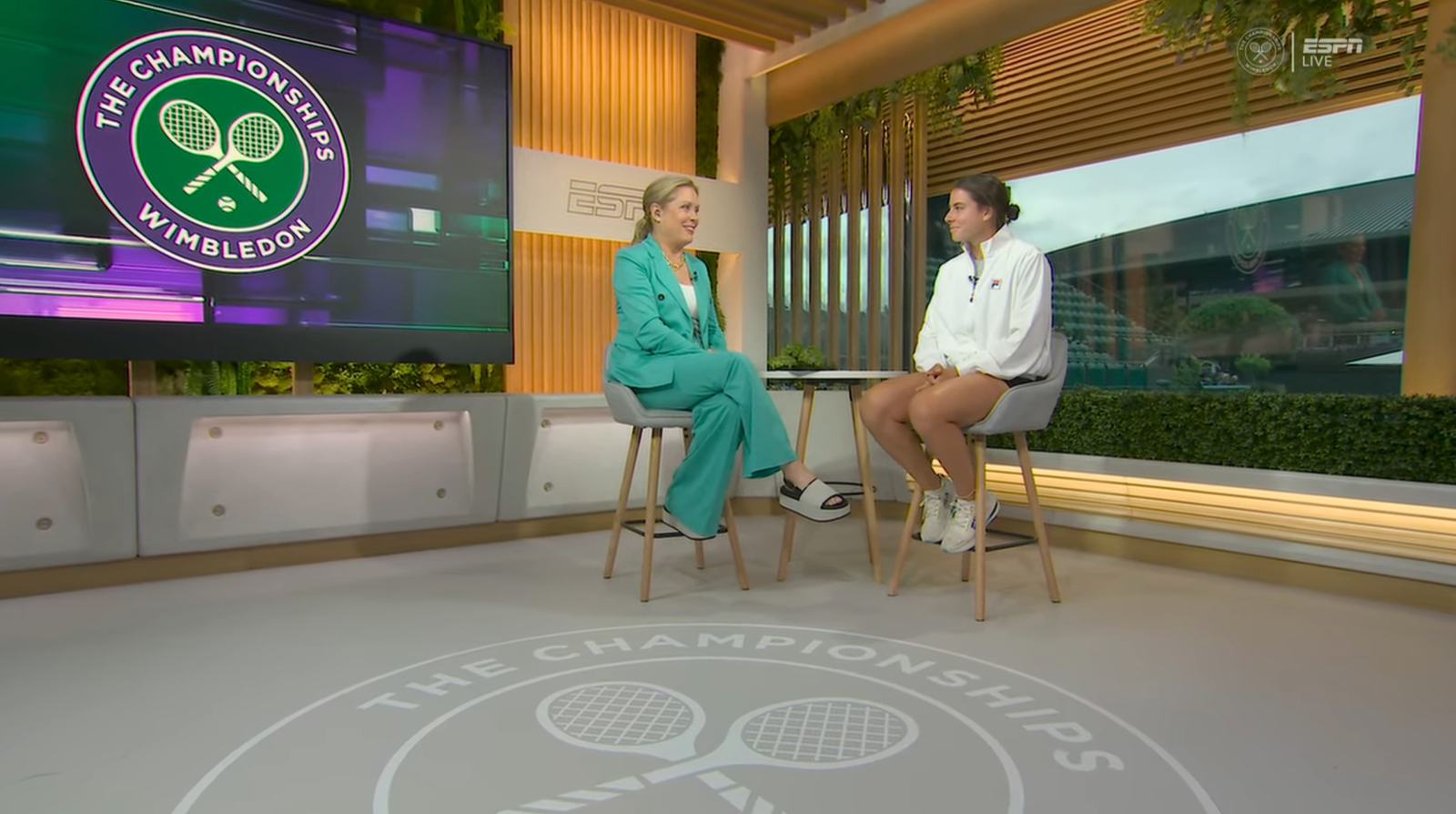

Studio 3’s design incorporates several flexible elements to enhance storytelling capabilities, including a movable desk, a dedicated interview area, a 110-inch interactive touchscreen for analysis and demonstrations and a 19-by-7-foot “mega wall” LED display.
The wall is created from 1.2mm LED tech supplied by AV Design Services, using the new flip chip technology.
“At night, sitting in front of glass when you can’t really see what’s out behind you, you fight a lot of reflection in the studio with all the studio lights. So this is where the mega wall came into play,” said Hanzlik. The set’s desk is atop a moveable platform so it can take advantage of the window or LED background, depending on the broadcast need.
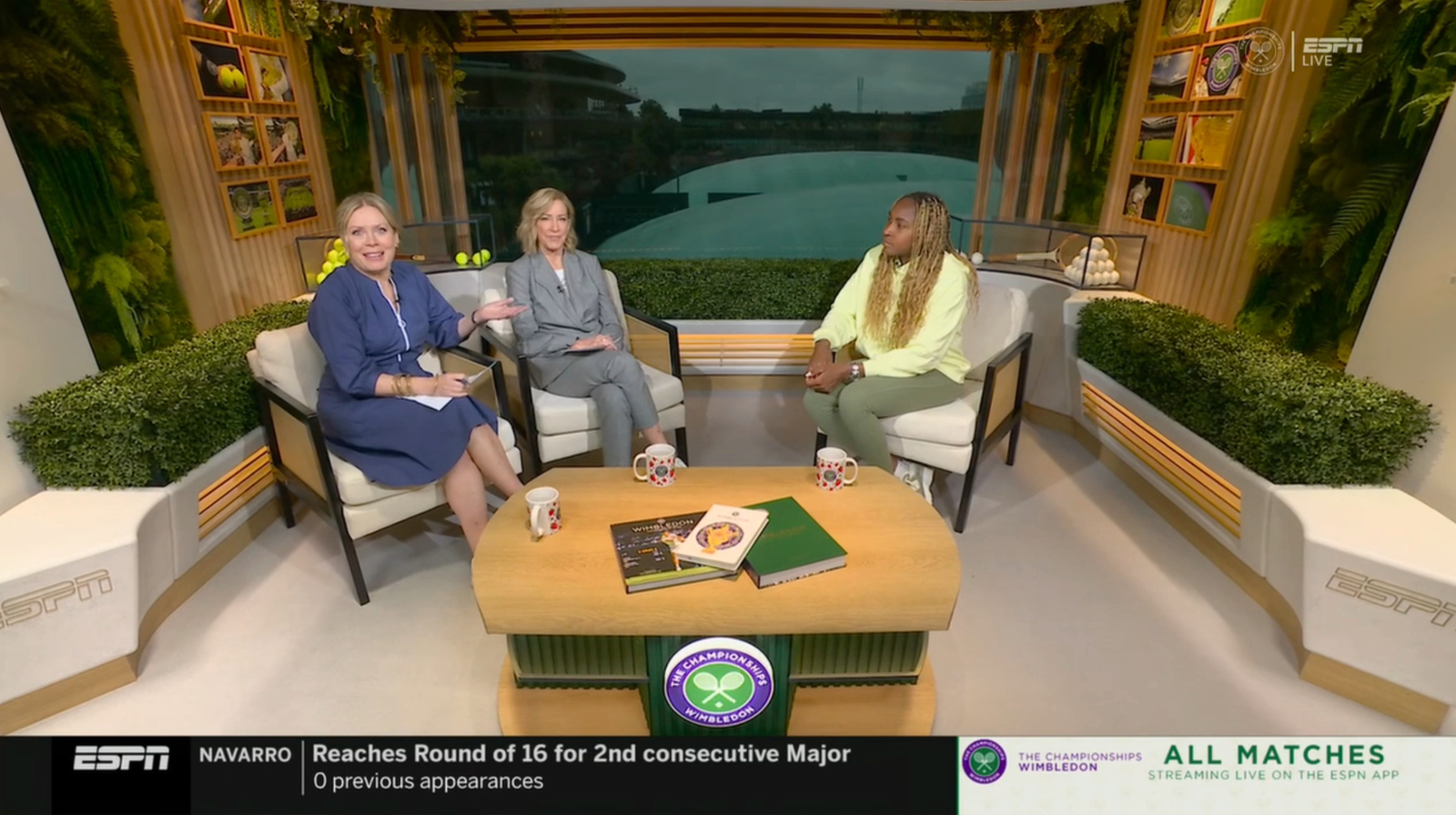

A second, more intimate space, Studio 12, has been designed for one-on-one interviews and smaller-scale productions.
The studios include new lighting infrastructure and rigging from B360 with lighting design by Malcolm Reed.
“It wasn’t until we met in March that we officially locked in the design. Now we had, 94 days basically after official sign-off to get on air,” said Chris Watson, director of studio and remote lighting, ESPN. “It was great to collaborate with our remote operations team and others to make that all happen in that short compressed timeline.”
“We had great communication amongst all teams, honestly. That was the key to everything”
Enhanced coverage from Wimbledon
The new facility and studios significantly expand ESPN’s capabilities in covering The Championships.
“The way that ESPN approaches this Grand Slam, us being a domestic rights holder, we take a number of feeds from the host. A lot of people think that we’re strictly an enhanced world feed, and in many respects we are. But the way that we enhance it is pretty pronounced. We have 25 unilateral cameras as well as our own graphic support and replay and edit support,” said Wilson.
“Ideally, programming wise, we look at it as local time. 11 a.m. to 1 p.m. is really a pre-show for us before the center court, court one, maybe court two, court three big matches come on board. And we do jump around in that first week. It’s a little bit of a, what do you call it, red zone, a little bit slower version of Red Zone where we’re hopping around from court to court. But this is where we can show our new studio and have a real studio presence and analysis on set, and that’s where the touchscreen comes in,” said Hanzlik.
The flexibility of the new studio setup also allows for creative solutions to unexpected challenges.
“Because we have the screens, it’s been a bit of a mess weather-wise here, and we’ve turned the mega wall into a huge weather map for Patrick McEnroe to get up there with his pointer and give us our weather outlook every day. So that’s been kind of fun,” said Hanzlik.
Subscribe to NCS for the latest news, project case studies and product announcements in broadcast technology, creative design and engineering delivered to your inbox.







tags
AV Design Services, B360, Calrec, Calrec Artemis, Calrec Brio, Chris Watson, EMG, ESPN, EVS, Grass Valley, Kayenne K-Frame Video Production Center, Malcolm Reed, Marti H, panasonic, RTS, Scott Fleary, SMPTE ST 2110, Sony, Wimbledon
categories
Broadcast Facility, Broadcast Facility Technology, Heroes, Set Design, Sports Broadcasting & Production, Sports Set Design